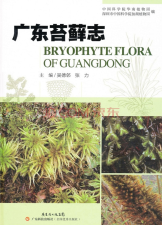
主要责任者: 吴德邻,张力
责任方式: 主编
出版者: 广东科技出版社
出版地: 广州
字数: 670 千字
页码: 1-552
开本: 16
中图分类号: Q949.35
语种:中
定价:168.00
出版时间:2013-10
丛书多卷书否:否
书目简介:本册工具书共收录943条词条。
| 词条 | 广东苔藓志 |
| 类别 | 中文百科知识 |
| 释义 |  主要责任者: 吴德邻,张力 责任方式: 主编 出版者: 广东科技出版社 出版地: 广州 字数: 670 千字 页码: 1-552 开本: 16 中图分类号: Q949.35 语种:中 定价:168.00 出版时间:2013-10 丛书多卷书否:否 书目简介:本册工具书共收录943条词条。 |
| 随便看 |
开放百科全书收录579518条英语、德语、日语等多语种百科知识,基本涵盖了大多数领域的百科知识,是一部内容自由、开放的电子版国际百科全书。